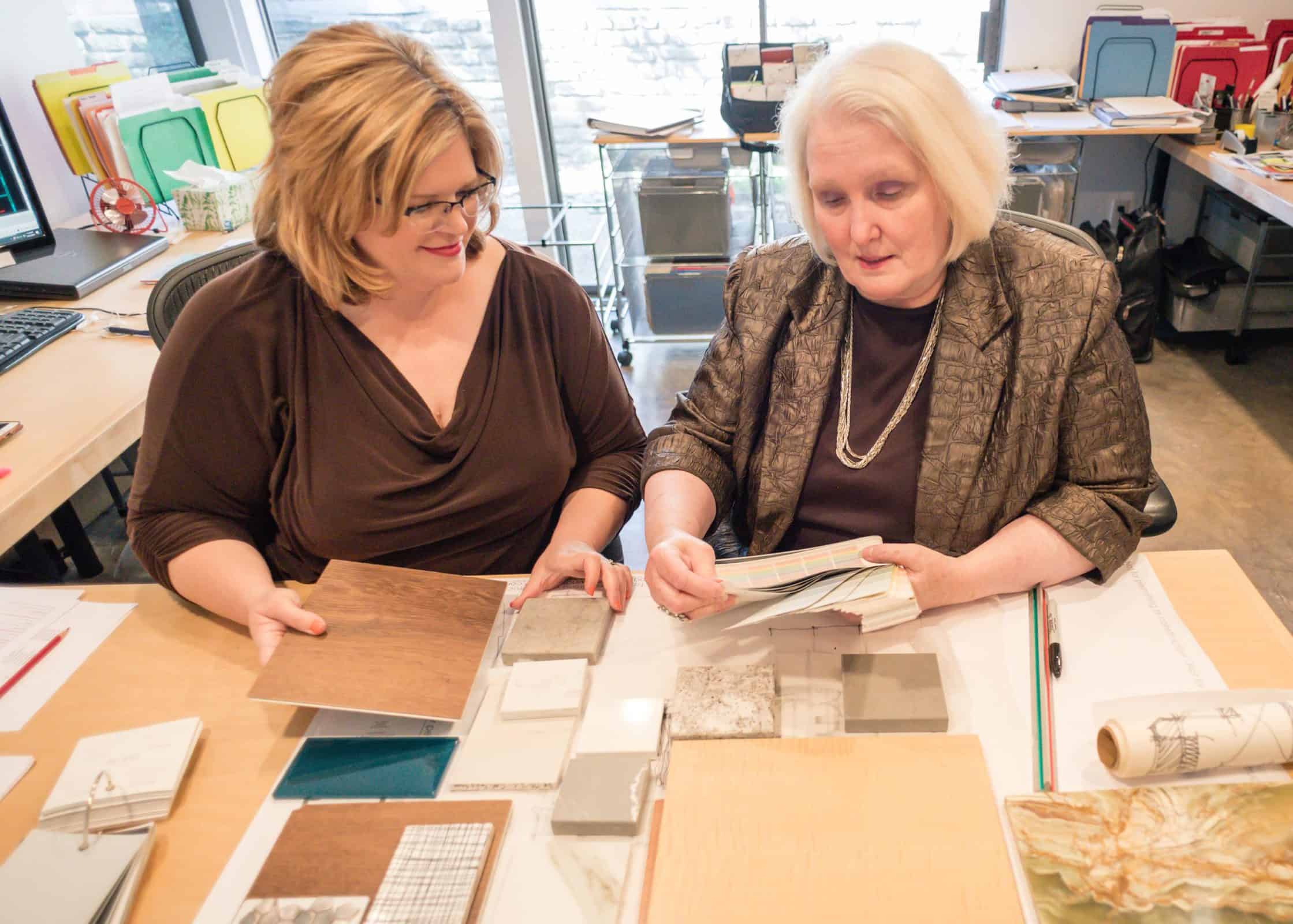Podcast: Play in new window | Download (Duration: 46:41 — 17.6MB) | Embed
Any home design architect will tell you that a good start to any new build project includes defining your goals.In short, that meaans considering your budget and draawing up a wants and needs list. In Episode 90 and the 2nd installment of the Home Design Series on The Architecture Happy Hour podcast, co-hosts and residential architects Laura Davis and Holly Hall talk about what happens at the beginning of each home design project. Much time is spent helping their clients define their needs, wants, and budget.
In this episode:
Goals – why are we doing this?
- Your stage in life, desired lifestyle, and occupants will determine the types of rooms and size of space you need.
- Is your motivation driven by pleasure or pain?
- How will you enjoy the room after the remodel? What annoyance are you trying to eliminate?
- If you are designing around a large family with children you may want casual, open spaces with plenty of rooms that can close and hide messes.
- A focus on accessibility and aging-in-place may be important if grandparents will be living with you.
- Formal entertaining, art collections, and fine furnishings require a different approach to the design and architecture.
- What does your home say about you and what should it look like?
- Architectural style will influence on how rooms get laid out
- Contemporary vs. Colonial
- Open floor plan vs. more formal and separate rooms
The difference between NEEDS and WANTS
- Make your wish list – divide it into two columns – NEEDS and WANTS.
- A Need is a requirement to meet your goals.
- A Want is an extra thing that would be really nice to have, but is not absolutely necessary.
- Architectural features can be considered a need or a want depending on the lifestyle you want to live:
- High vaulted ceilings, wood beams
- Arched openings
- Large porch, pool cabana, she shed, man cave
- Extra trim and details in wood work – beadboard wainscoting, crown moulding
- Think about the amenities you need or want in your home design:
- Plumbing – double vanities in your Master, His and Hers toilets, steam shower, Insta-hot water dispenser in the kitchen
- Appliances – gourmet Kitchen with extra freezer, 4’ wide commercial gas range, glass front refrigerator, double dishwashers, double laundry upstairs/downstairs
- Storage – large walk-in closets, stockpile room/pantry, specialty storage for silver, jewelry, shoes, hats, collections, holidays
- Technology – smart house controlled on your phone, video security, surround sound, powerful WiFi, extra outlets at specific heights (sewing/workshop) or for Christmas lights (eaves), built-in reading lights by your bed, universal remotes
- Room for hobbies, interests – wine cellar, dog bathing room, sewing or art studio, movie theater room, golf swing simulator
How to pay for it: developing a home design budget
Let’s look at some things to consider when estimating how much your new home will cost to build.
- Start a spreadsheet and list all the rooms and features that will be in the new house or involved in your remodel.
- Cost per square foot room comparisons – In Dallas, Texas these spaces can range from $300 (and up) per square foot for the expensive rooms like Kitchens and Master Bathrooms, and as low as $75 per square foot for the more simple spaces like a Garage. Your average pricing will vary depending on where you live.
- $$$$ – Kitchens, Bathrooms
- $$$ – Family/Living Rooms Rooms, Master Bedrooms, Laundry/Mudrooms (lots of cabinetry), custom Closets
- $$ – Bedrooms, Breakfast Rooms, Offices, Playrooms
- $ – Garages, Covered porches (be careful of expensive doors, lighting, or finishes)
- If you are not familiar with construction costs in your community, you might need to contact a few general contractors to ask what’s average in your area.
- Switching out luxury items for less expensive versions can help get a budget back in the range where you want to be.
- Typical Room Sizes – measure what you have and decide if you need more or less space.
- Be honest about how much you can spend, then subtract 10-15% for the “might-as-wells” that get added to the project along the way.
- Plan for contingency expenses, especially if you are remodeling or adding on to an existing house.
Related Content
Podcast: Starting a Home Design Project
Post: Building a New Home
Post: Questions to Ask Before Designing Your New Home
Have questions you’d like us to answer? Contact us here!
Architecture Podcast Sponsorship / Guest Opportunities
Are you interested in sponsoring The Architecture Happy Hour podcast?
We want to connect with companies that are a good match with the interest of our listeners.
Please complete the Sponsorship section of our Contact Form and we will be in touch.
Laura Davis is a registered architect and interior designer in the state of Texas and Colorado, and a founding member of hpd architecture + interiors. Laura's extensive experience includes residential as well as commercial and retail projects. She also has a particular interest in restoration, holding a certificate in Historic Preservation. She is energized by the character of older homes and the stories of those who have lived there. Responding to the needs of the current owner, while also honoring the personality of the original home is a delicate process to be enjoyed.

